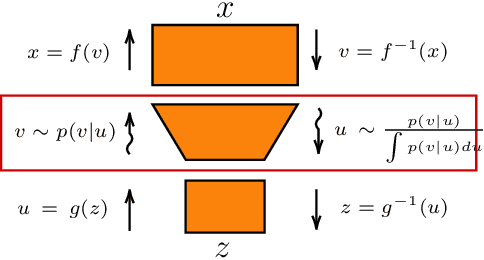Renos Zabounidis
Benchmarking and Enhancing Disentanglement in Concept-Residual Models
Nov 30, 2023Abstract:Concept bottleneck models (CBMs) are interpretable models that first predict a set of semantically meaningful features, i.e., concepts, from observations that are subsequently used to condition a downstream task. However, the model's performance strongly depends on the engineered features and can severely suffer from incomplete sets of concepts. Prior works have proposed a side channel -- a residual -- that allows for unconstrained information flow to the downstream task, thus improving model performance but simultaneously introducing information leakage, which is undesirable for interpretability. This work proposes three novel approaches to mitigate information leakage by disentangling concepts and residuals, investigating the critical balance between model performance and interpretability. Through extensive empirical analysis on the CUB, OAI, and CIFAR 100 datasets, we assess the performance of each disentanglement method and provide insights into when they work best. Further, we show how each method impacts the ability to intervene over the concepts and their subsequent impact on task performance.
Concept Learning for Interpretable Multi-Agent Reinforcement Learning
Feb 23, 2023



Abstract:Multi-agent robotic systems are increasingly operating in real-world environments in close proximity to humans, yet are largely controlled by policy models with inscrutable deep neural network representations. We introduce a method for incorporating interpretable concepts from a domain expert into models trained through multi-agent reinforcement learning, by requiring the model to first predict such concepts then utilize them for decision making. This allows an expert to both reason about the resulting concept policy models in terms of these high-level concepts at run-time, as well as intervene and correct mispredictions to improve performance. We show that this yields improved interpretability and training stability, with benefits to policy performance and sample efficiency in a simulated and real-world cooperative-competitive multi-agent game.
Normalizing Flows Across Dimensions
Jun 23, 2020



Abstract:Real-world data with underlying structure, such as pictures of faces, are hypothesized to lie on a low-dimensional manifold. This manifold hypothesis has motivated state-of-the-art generative algorithms that learn low-dimensional data representations. Unfortunately, a popular generative model, normalizing flows, cannot take advantage of this. Normalizing flows are based on successive variable transformations that are, by design, incapable of learning lower-dimensional representations. In this paper we introduce noisy injective flows (NIF), a generalization of normalizing flows that can go across dimensions. NIF explicitly map the latent space to a learnable manifold in a high-dimensional data space using injective transformations. We further employ an additive noise model to account for deviations from the manifold and identify a stochastic inverse of the generative process. Empirically, we demonstrate that a simple application of our method to existing flow architectures can significantly improve sample quality and yield separable data embeddings.
 Add to Chrome
Add to Chrome Add to Firefox
Add to Firefox Add to Edge
Add to Edge